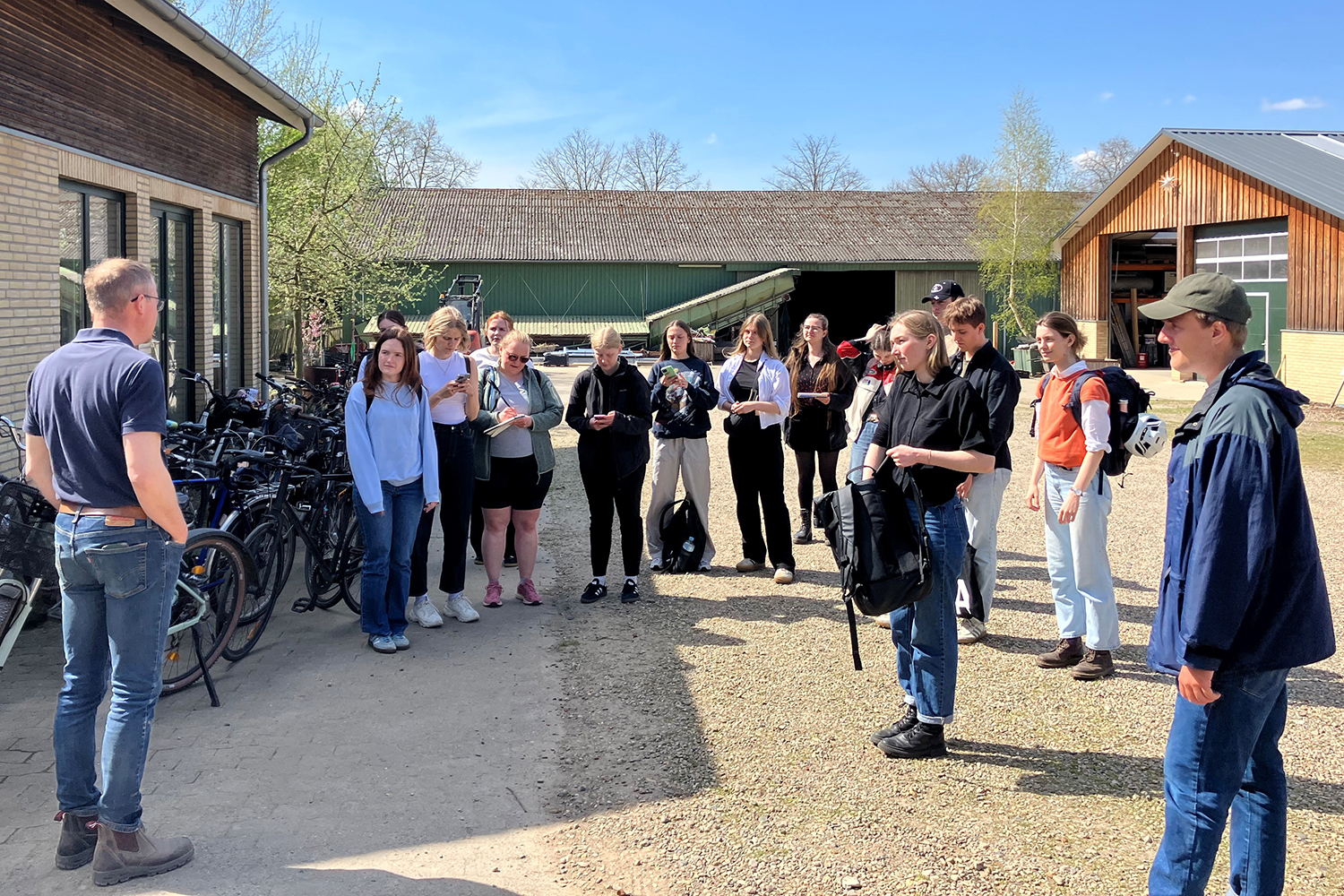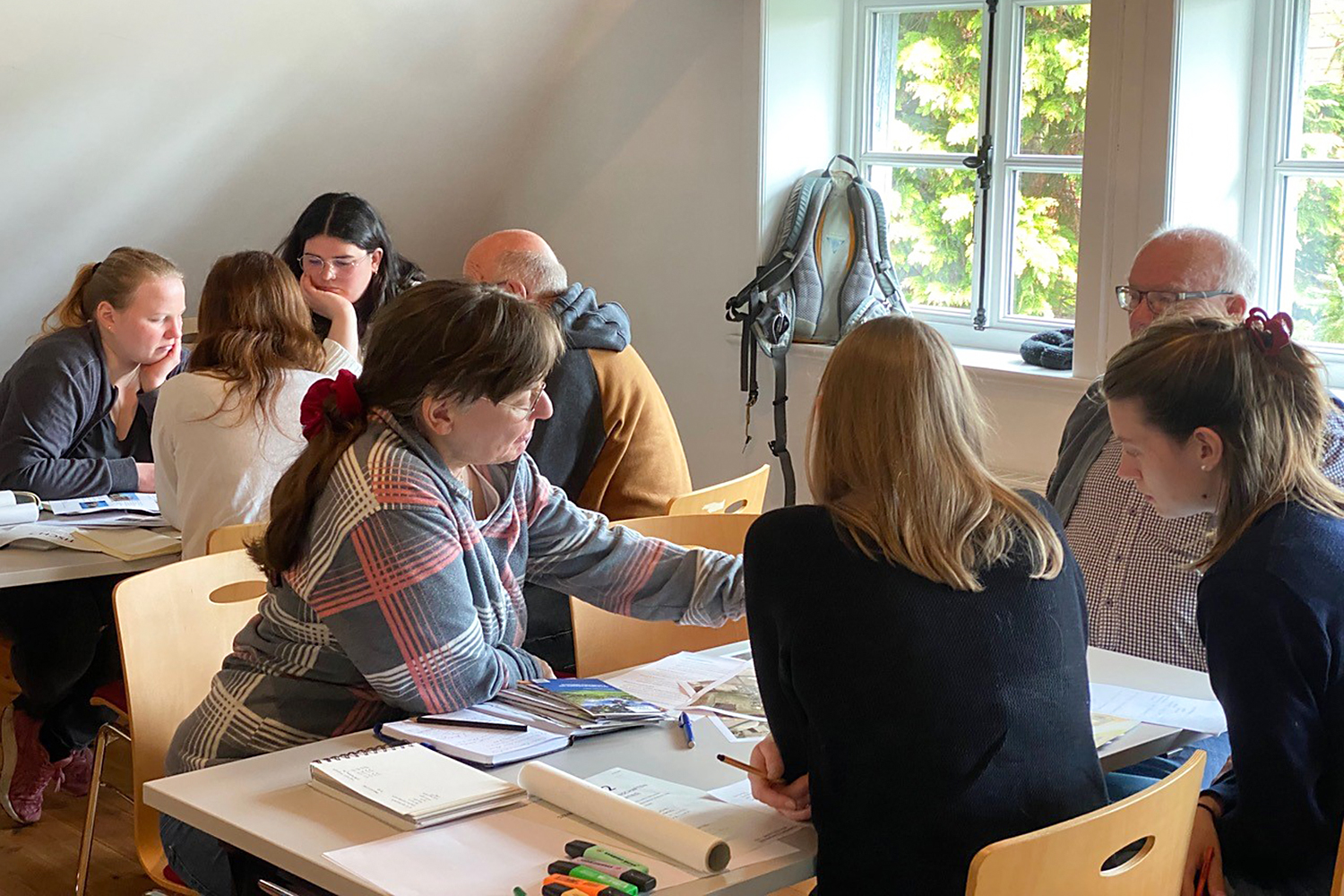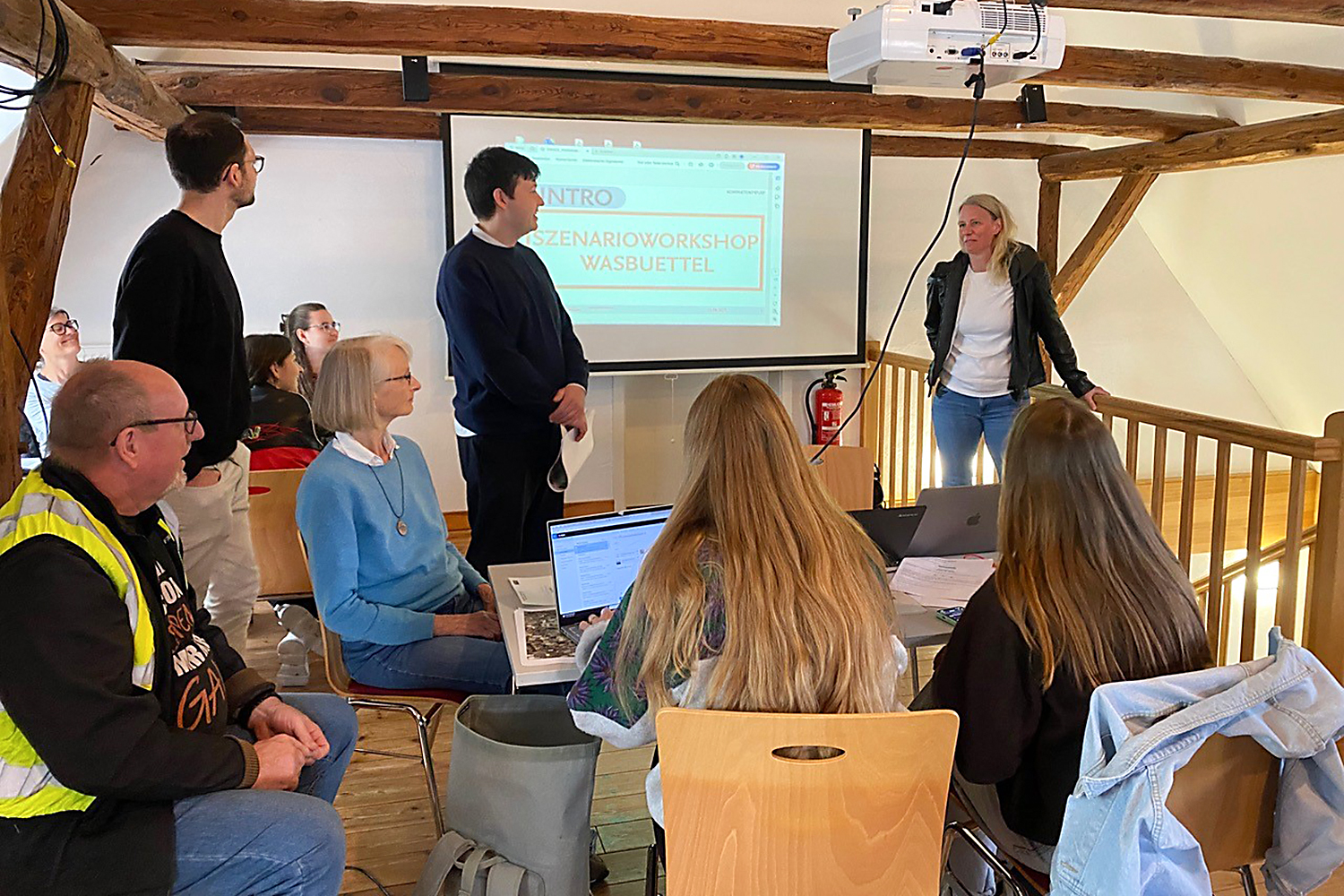Students at TU Braunschweig design future scenarios for the village of Wasbüttel
What might the village of tomorrow look like? This was the question posed by the mayor and council of the municipality of Wasbüttel in the district of Gifhorn to Technische Universität Braunschweig. What followed was an unusual and exemplary development process involving a knowledge dialogue, on-site explorations and joint workshops, from which architecture students developed ideas for the future of the village. The students will present their results to the public in Wasbüttel on 27 May and display them in an exhibition.

During the excursion, students were able to learn more about Wasbüttel’s potential and challenges on site, here in conversation with Deputy Mayor Ernst Lütje (left). Photo credits: SpACE Lab at ISU – Institute for Sustainable Urbanism/TU Braunschweig
Wasbüttel, a village with around 1,800 inhabitants in the district of Gifhorn, faces major challenges like many other rural communities in Germany: demographic change, the climate crisis, digitalisation and urbanisation are changing the realities of life. Rural areas are undergoing profound change. At the same time, a third of Lower Saxony’s population lives in rural areas. The question of how these places can be made sustainable is therefore highly relevant.
Under the direction of Professor Vanessa Miriam Carlow, the SpACE Lab at the ISU – Institute for Sustainable Urbanism at TU Braunschweig has been working intensively on rural areas and urban-rural relations for many years in projects such as the ‘Projektakademie Ländlicher Raum’ (Rural Project Academy), ‘Metapolis’ and, currently, the ‘UCFL – Urban Climate Future Lab’ at the Lower Saxony Climate Research Centre. In a kick-off workshop at the university’s SpACE Lab, Mayor Nadine Hering and council representatives identified challenges and wishes and developed possible methods and strategies for developing a vision for Wasbüttel.
Long-term perspective for Wasbüttel
Wasbüttel is conveniently located between Gifhorn, Braunschweig and Wolfsburg, in the immediate vicinity of the Mittelland Canal. The townscape is characterised by detached and semi-detached houses surrounded by fields and small wooded areas. Public transport and local amenities are limited. Traditional ways of living and working are changing.
The municipality of Wasbüttel has therefore set itself the goal of not responding to short-term needs – such as the use of agricultural land for energy production or additional housing by designating new areas for single-family homes – but rather of developing a long-term perspective. As a first step towards developing and discussing a spatial model for Wasbüttel, students at the ISU – Institute for Sustainable Urbanism have developed various future scenarios in a student cooperative design studio.

During the workshop, students discussed and developed visions for Wasbüttel’s future together with citizens. Photo credits: SpACE Lab at ISU – Institute for Sustainable Urbanism/TU Braunschweig
Close cooperation with the village community
Close cooperation with the village community was at the heart of the design studio ‘Wasbüttel – a village in the making?!’ At the beginning of the course, the students examined large-scale, visionary projects as well as four future scenarios for rural areas in Lower Saxony, which the institute developed as part of its long-term research work and published in 2022 under the title ‘Metapolis. Topoi. Scenarios for Urban-Rural Sustainability in Lower Saxony’ by Jovis.
At the same time, intensive field research was carried out. The students explored Wasbüttel from different perspectives: young people and senior citizens, commuters and farmers showed the students ‘their’ Wasbüttel. On this basis, the students drafted initial concepts for the village, which were tested, discussed and further developed with local residents in April. In the weeks that followed, the students deepened their work on the ‘village of the future,’ accompanied by Professor Vanessa Miriam Carlow and Daniel Grenz, Benedikt Herz and Olaf Mumm from the ISU team.

Mayor Nadine Hering (right), Daniel Grenz (centre), Benedikt Herz (left) and Olaf Mumm (not pictured) from the Institute for Sustainable Urbanism opened the workshop. Photo credits: SpACE Lab at ISU – Institute for Sustainable Urbanism/TU Braunschweig
Presentation at the Old School
The results will be presented on 27 May from 12:30 p.m. to 4 p.m. at the Old School in Wasbüttel. In addition to Mayor Nadine Hering, representatives of the local council and the TU team, Dr. Naomi Hanakata from the National University of Singapore will also be present. The event is open to the public, and all interested parties are cordially invited to attend.
The design studio is part of the activities of the SpACE Lab at the ISU – Institute for Sustainable Urbanism, which works with partners from industry to develop research questions and challenges and to bring the knowledge gained from research into social dialogue and implementation. In this way, it contributes to the transfer of knowledge within the ‘Ecoversity’ of TU Braunschweig and strengthens the connection between science and practice in a sustainable manner.
